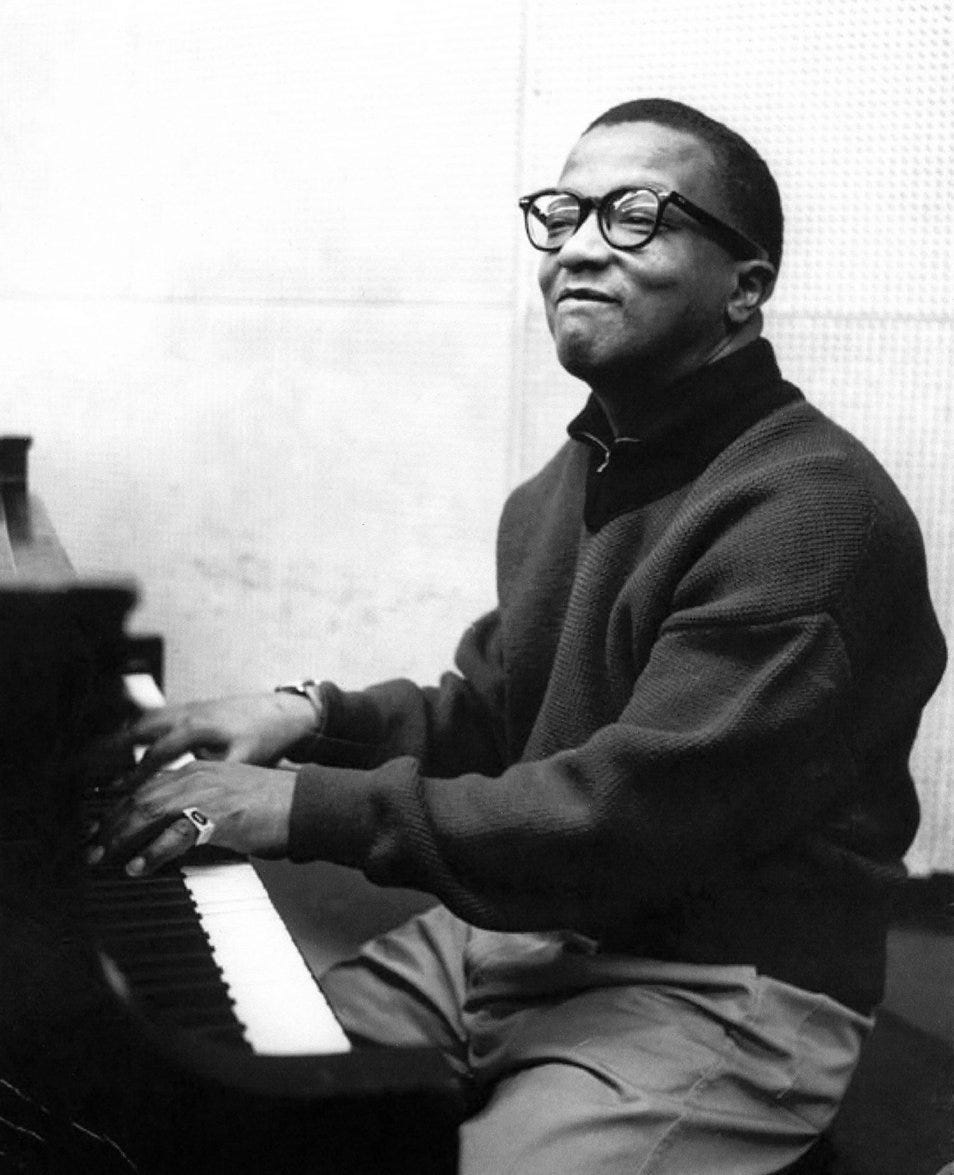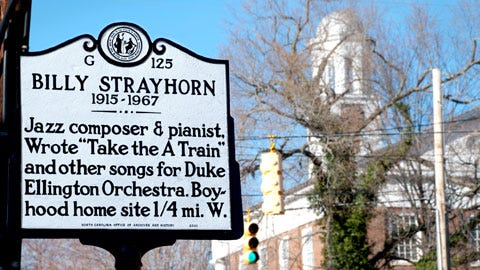Sometimes the universe speaks to you, and it can be persistent. Such has been my introduction to Billy Strayhorn. I first heard his name at a concert I reluctantly attended (who turns down a free ticket, even if it is show tunes) by Brian Stokes Mitchell, a Tony Award winner and vocalist. Brian was a master of all genres of music and prior to each piece, introduced you to the song, its author and the story behind it. He and his amazing keyboard player then tackled the Billy Strayhorn song called “Lush Life.” I had never heard of Billy Strayhorn up until this moment.
Then, about 2 weeks later, in the first few pages of a novel loaned to me by a friend, there’s a throwaway passage about a nurse from India hearing “Take the A Train” and, …“the strange dissonant notes thrown together, wanting resolution, and somehow, they captured America and Science and all that was bold and brash and daring and exciting about America. Notes pouring out of the skull of a black man whose name was Billy Strayhorn. Stray…horn!”
But we all know the universe sends you its vibrations in three’s. About one week later, I attended a family wedding in the quaint little town of Hillsborough, NC. On a morning walk, I came upon one of those historical markers you might pass by without any notice. But this one proclaimed that Hillsborough was the boyhood home of yes, Billy Strayhorn.
In less than a month’s time, I was bombarded by this name. Surely, it’s a sign.
Billy Strayhorn (1915-1967) was Duke Ellington’s pianist, composer, and arranger. His mother’s family was from Hillsborough and she sent him there during his elementary age years to distance him from his abusive, alcoholic father. Billy would later say his grandmother was his greatest inspiration. She was the pianist for her church and it was at her home that he would learn to play hymns on her piano and listen to records on the Victrola.
When he returned to his parent’s home in Pittsburgh, he was still in grade school but began working at a drugstore to get enough money to buy a piano. By the time he was 11, he paid for his own sheet music and classical music lessons. His dream of becoming a classical composer met up against the harsh reality of a profession dominated by white musicians. As a 19-year-old, he was introduced to jazz through pianists like Art Tatum and in the same year wrote his first major composition, a 10-song musical called Fantastic Rhythm. In the book, Lush Life: A Biography of Billy Strayhorn, written by David Hajdu, it becomes clear that Billy heard all the elements of classical music in the jazz of Art Tatum and Teddy Wilson, and these were serious musicians, and they were black. He began to see himself in this world.
While still a teenager, Billy wrote the song that would ultimately become his anthem, “Lush Life.”
I used to visit all the very gay places
Those come what may places
Where one relaxes on the axis
Of the wheel of life
To get the feel of life
From Jazz and cocktails
The song was so intricate, with many chord changes, that even Sinatra gave up after trying to record it multiple times. It took the genre-bending singer Linda Ronstadt to finally conquer it in 1986, resulting in a Grammy for her interpretation of “Lush Life.”
In 1938, when Billy was 23, he was taken backstage by a friend to meet Duke Ellington. Billy used that first meeting to show Ellington how he might arrange one of his songs, and then played his piano. Ellington, clearly impressed, told him to stop by his home in Harlem. The directions scribbled by Ellington would turn into Strayhorn’s signature song: “Take the A Train.”
Except, Duke would get the credit.
"The Duke Ellington Orchestra was one of the greatest orchestras in the world — not just one of the greatest jazz orchestras, one of the greatest orchestras in the world," Hajdu says. "The opportunity to have music that you composed played by those musicians is a gift beyond measure.
Hajdu says Ellington gave Strayhorn, an African-American gay man, his acceptance. "Two strikes against him in those days," Hajdu says. "And the closest we would come to thinking of someone as being out-of-the-closet gay. He was comfortable with who he was and never pretended to be anything else. And Duke Ellington accepted him for that. And that is also golden."
And yet, Lena Horne would consider Billy the love of her life. “He was just everything I wanted in a man, but he wasn’t interested in me sexually. We were in love, anyway. He was the only man I really loved.”
Ellington would become a father figure to Billy and although most of the composing and arranging credit went to Ellington, he once described him this way: "Billy Strayhorn was my right arm, my left arm, all the eyes in the back of my head, my brain waves in his head, and his in mine."
In 1939, Duke’s son Mercer Ellington would introduce Billy to another African-American musician named Aaron Bridgers who would become Billy’s partner until Bridgers moved to Paris in 1947. “In a sense, Strayhorn made himself a triple minority,” Hajdu writes. “He was black, he was gay, and he was a minority among gay people in that he was open about his sexuality.” Another gay, black musician friend said, “And he did this in the 1940s when nobody but nobody did that. We all hid, every one of us, except Billy.”
Strayhorn collaborated with Ellington for almost 30 years, writing or co-writing over 100 songs. "Strayhorn played an essential role in changing the sound of American popular music, at a time when jazz was American popular music, in the 1940s," Hajdu says. Like some musicians before and after him, Billy smoked and drank to excess, and died of cancer at the age of 51.
So why was the universe so intent on telling me about this man? Maybe it’s because the roots of the music I love from the 60s and 70s are a melting pot of American jazz and blues. But who would have thought this obscure pianist in the 1940s would combine classical music sensibilities with jazz to create something so lasting? Would there be a James Brown, Bob Dylan, Linda Ronstadt, or the Beatles without these musical roots? I think the universe was telling me not to forget people like Billy who, musically and socially, gave hope to another generation to experiment, be bold, and be themselves.
References:
Lush Life: A Biography of Billy Strayhorn, by David Hajdu, Copyright 1996, Published by Farrar, Straus, and Giroux
NPR Music; https://www.npr.org/2015/11/29/457598579/100-years-of-billy-strayhorn-emotional-architect-of-song





Way to follow up on the universe speaking to you with this most excellent article. Great use of quotes,I’m interested to know more about this young man who wrote “Lush Life.”
❤️❤️ brought back memories of listening (and learning) to music with my Dad….great article Pete. I’m heading down Strayhorn Ave now…..